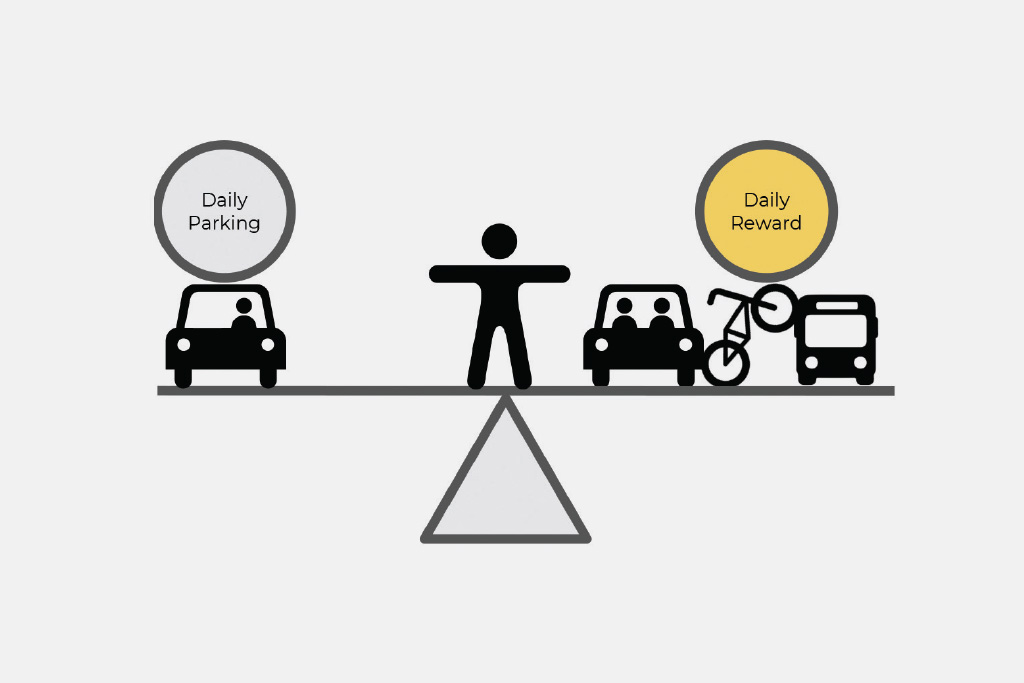Adapt Or Die: Survival Tips for the Era of New Mobility
BY PAULO NUNES-UENO
Parking is out. Mobility is in.
Strolling the vendor booths at the Canadian Parking Association conference in Toronto this year makes that clear. We are all rebranding, it seems. Including me. The group I started at Seattle’s DOT, called the Transit and Mobility Division, manages transit, bikeshare, carshare, and of course, parking. Now as a consultant, I help clients retool their campus and city parking into ‘mobility’ services.
Mobility. Such a sweet word. If you close your eyes, you can almost hear…the future! Unfortunately, the transportation and ecological challenges we face won’t be solved through slogans. And the stakes couldn’t be higher. Get ‘mobility’ right and we stand a chance against climate change. Getting it wrong also spells extinction for those in the parking–I mean mobility–business.
Technology changes and growth make real adaptations all the more urgent. Re-urbanization is transforming cities throughout North America. Companies that a generation ago would have happily sprawled in suburban office parks are packing into downtown skyscrapers. Witness the new Amazon HQs headed to NYC and Washington DC. We can actually see this change happening inside our workplaces. The typical office from the early 2000’s housed 3 or 4 people per 1000 square feet. Today interior designers and architects with open offices and shared workstation have managed to more than double that.
Too bad transportation can’t claim anything close. None of the innovations to date increase the capacity of roadways or parking lots very much.
Driverless cars, the next big ‘innovation’ afoot, will actually make matters worse. Though we don’t know when autonomous vehicles are coming exactly, we can be sure they will impact the urban landscape. How? Because we have experience with services that drop people off at their destination and keep going. They’re called taxis. Uber and Lyft are just gigantic taxi companies. New York and other big cities are choked with Uber and Lyft cars running empty much of the time but for the driver. Driverless cars will be same, but more so. More cars, driving empty, more of the time.

The writing on the wall should be easy to read: there is more congestion on the way and the days of charging to store cars while people work or shop are numbered. Yet inertia is strong in our business. Parking garages worth billions of dollars are in planning, design or construction phases. When the robots come, most garages may become stranded assets with no hope of ever paying back their investors.
We can start to untangle this mess by defusing the car dependence at the root of the problem. Our reliance on auto transportation comes, in part, from a skewed menu that makes driving always seem the cheapest and easiest choice. But it’s often not. We can extend the life of existing parking facilities by helping some people drive less some of the time. Streets would flow more easily and the parking industry could focus on rethinking its business model instead of blindly erecting monuments to a soon-to-be bygone era.
The Four C’s of Mobility
I’ve developed a list of ‘ingredients’ to create more enticing, and varied mobility menus: Culture, Cost, Convenience and Concrete.
Whether you work at a city, a college campus, or a provider of parking (mobility) services, you probably subtly or overtly encourage people to drive. For example, recently visiting a client with a severe parking shortages I noticed parking stalls next to the main entrance marked “Employee of the Quarter.” Culture speaks volumes.
The way we price parking also often induces driving. Monthly or annual rates are such that kill the incentive to hop on a bike every once in a while. Charging for parking per use rewards people who cut back their driving even just one day. The program I ran at Seattle Children’s Hospital takes this one step further, providing a $4 incentive for each day someone leaves the car at home. Using this combination, Seattle Children’s reduced drive alone to 32% from over 50% ten years ago–saving millions in parking construction costs and freeing up land for patient care.
Paying attention to convenience means not only shortening trip times but also making mobility options easy to use. In many cities, paying for parking is a cinch but getting your hands on a bus pass is a huge hassle.
Much work still needs to be done on ‘complete streets’ to ensure the built environment, or concrete, provides safe and connected sidewalks, bike lanes, and transit stops. But destinations can also be improved to make them more intuitive for those who have walked, biked, or used transit.
Once we have spun the four C’s into irresistible mobility menus that provide customers with real choices allowing us to downsize or altogether avoid new parking construction, the next challenge is to pivot to charging for ‘moving’ instead of ‘parking’, based on how many people are in the vehicle. Doing these two things will be taking our branding to heart–and it might mean the difference between thriving or extinction in the coming era of new mobility.
About the Author: Paulo Nunes-Ueno is an expert in sustainable transportation. His firm, Nunes-Ueno Consulting helps cities, campuses, and transit agencies design and implement cutting edge mobility programs. Find out more at nunes-ueno.com. PAULO@NUNES-UENO.COM / 206-618-2201






